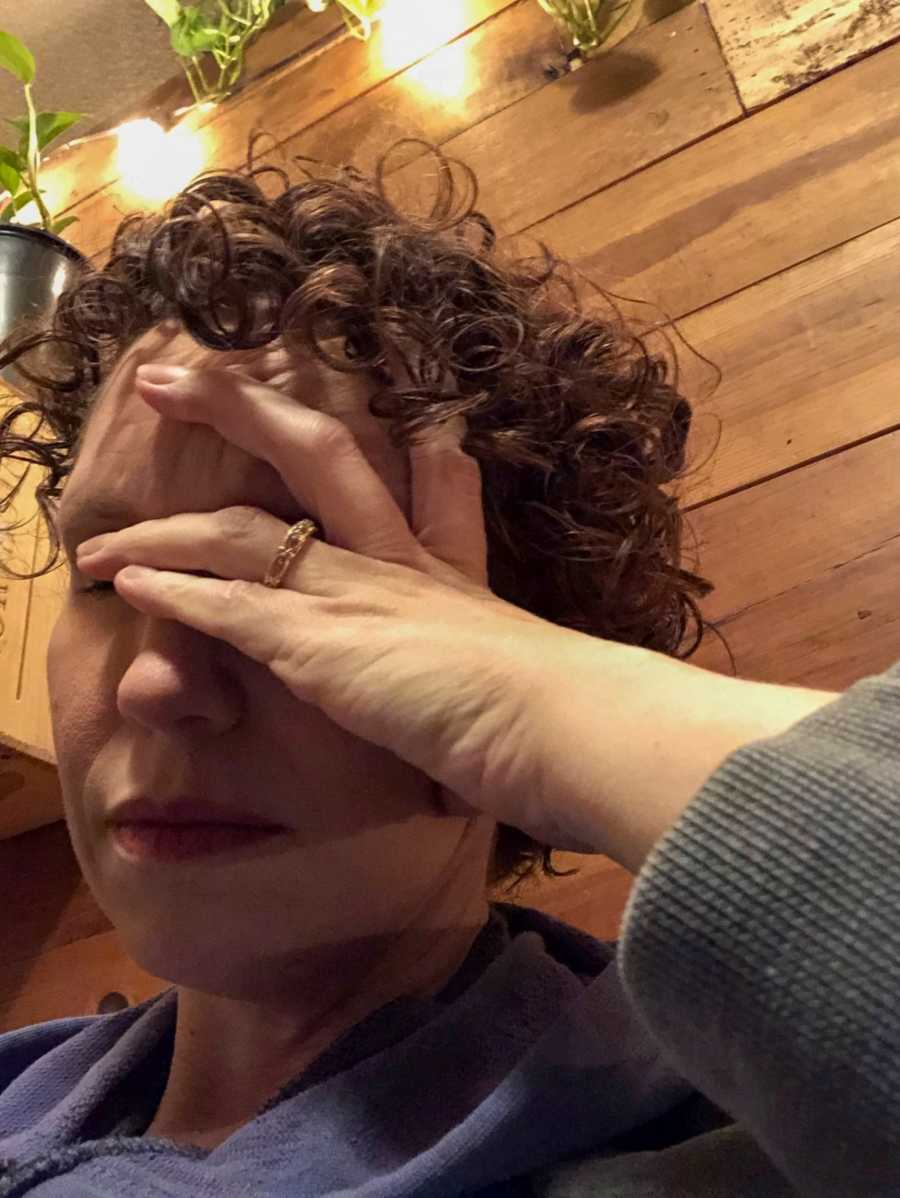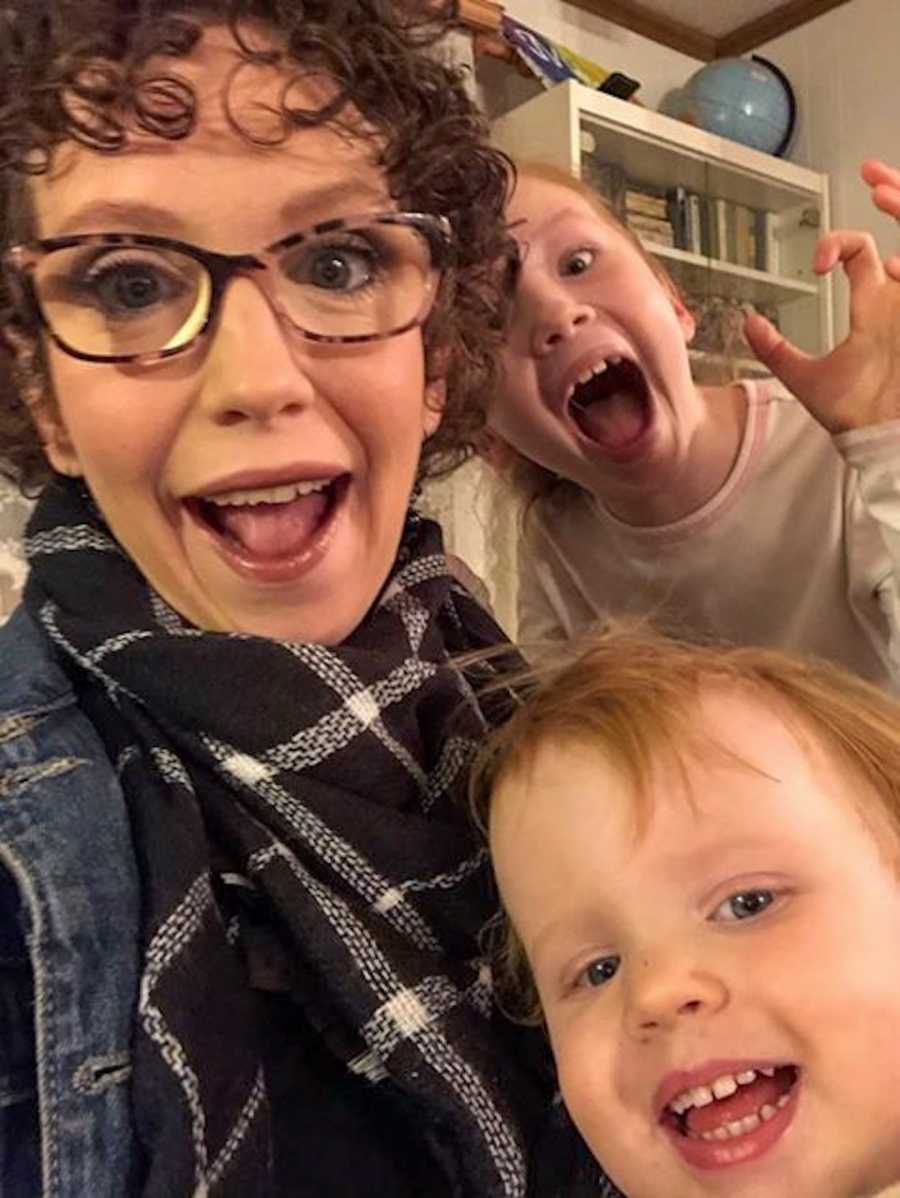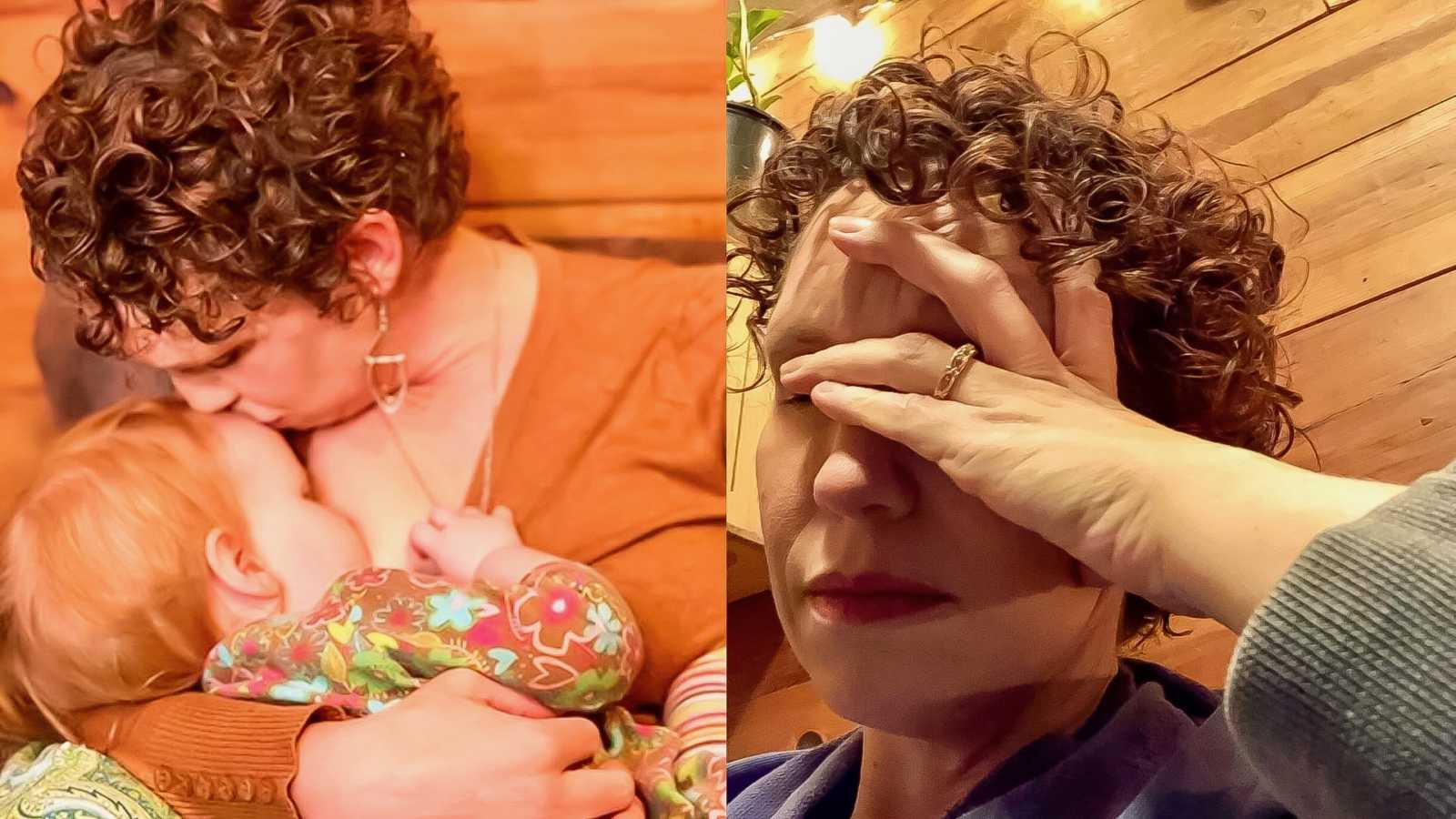“I snapped this crap selfie last week as a reminder of the times I struggle. I was about to delete it from my phone (scrolling through and wondering why I took it) when I decided to share it because I know someone else needs to know they aren’t alone.
The day had been long. The toddler would not stop crying, shrieking, screaming, whining, fussing, and being SO VERY TODDLER. She’d been like this for a few days at this point. On top of that, it was day 3 of a sinus headache for me, which, frankly, I felt I did not deserve because I had done everything I was supposed to avoid getting sick and felt cheated. My partner was neck-deep in an issue at work and unavailable.

Then nobody wanted to take care of their responsibilities. They were all hangry and everyone apparently forgot how to hang up their jackets. It seemed like nothing was the happy family I had signed up for.
I wasn’t just irritable, I was angry. Bubbling just under the surface, I was seething with rage.
My mother was often very angry. She loved us very much, but anger was her default emotion. Though she loved us very much, her anger made her a scary person and disappointing her was a terrifying experience. Afraid of her anger, my siblings and I were constantly on edge ourselves, not wanting to set her off. For me, I tried to be perfect. For my sister, she avoided being around too much. For my brother, he couldn’t pull off perfect enough, so he went with bad and not caring she was always angry at him. I had determined I wouldn’t be anything like my mother.
I was wrong. It was me too.
So what do I do? How to change? Would I just be stuck this way?
In time, I learned a lot about my anger. With unresolved childhood and adult trauma (including traumatic childbirth experiences) my fight, flight, freeze, or fawn response was always in high gear. With my go-to being fight, I needed to address that trauma and identify my triggers. This would lead to my fight or flight response not being always on high alert.
That wasn’t all though. I also had to develop new response habits. That meant apologizing a lot for how I expressed my anger, saying what I did wrong to those my anger exploded all over, and then practice how I did want to respond. I said ‘I’m sorry’ a lot, along with ‘that’s not how I want to respond, and I want to do better.’ Also ‘may I try again?’
It was a humbling process. It still is.
My emotions, for so long, had been suppressed for what I thought was the benefit of others (and as a child, for some self-preservation). I had to learn to get comfortable with them. I had to let myself feel.
My problem was, anger was my go-to emotion, which, frankly, really made it hard to be the partner and parent I wanted to be.
For me:
Fear equals anger. Stress equals anger. Overwhelmed equals anger. Frustration equals anger. Fatigue equals anger (and meaner anger, at that). Pain equals anger. Sadness equals anger. Guilt equals anger. Anxiety equals anger. Feeling disrespected equals anger. Feeling that I failed equals anger. Burnout equals anger.
Shame equals the biggest anger of all.
Because I had denied my own anger for so long, I couldn’t even get to those emotions. I had to learn to feel my feelings in a way that didn’t harm those around me: taking space, walking myself mentally through the process, talking to someone I could trust (and who wouldn’t be hurt by my processing) about it. Then I had to get curious about those feelings. Eventually, I could identify that anger was often my secondary emotional response, a response to my first emotional response to something like fear.
This was why if my children did something that scared me, I would often feel anger and yell and shame them for it. I was scared and I felt shame they would do that (because in my head, if I had taught them well enough, they wouldn’t have). Anger raged all over the place in me and onto those around me. I’m still growing in understanding my feelings and allowing myself to express them safely.
Some things that have helped: Learning about normal childhood development, learning about trauma and stress responses (lots of ah-ha moments here), developing healthy response habits, addressing conflict with healthy conflict resolution skills, identifying and enforcing my personal boundaries (without anger), asking for help when I need it, stopping, breathing, slowing down, releasing my emotions in safe ways (exercise, writing, tearing apart something that needs to be thrown out- boxes are good for this, dance, loud music, ranting to a safe person, etc.), creating a culture of communication, understanding why people have conflicts, connection.
That last one is one of the most important. Anger and then shame that I’m angry often disconnects me from others. It takes work and effort to maintain connection and go seek it out, particularly if my anger was expressed in a way that hurt others.
But connection is by far the most important and effective step in working through anger and reprograming my stress responses to ones that are kind, respectful, compassionate, and healthy. The more anger I am feeling and the more often I’m feeling it is a sign that connection has been disrupted and I need to make it a priority.
That day last week, I ended up taking just about 5 minutes alone and working through some of these steps. It used to take me a lot longer (as in it could take me days) but now I’m so practiced, I can move through them pretty quickly. When I came out, I was breathing calmly and prioritized connection.
Everything didn’t become perfectly wonderful and happily connected but I was able to respond how I truly want to and eventually, that helped the rest of the family connect too.
If you’re an angry parent, you’re not alone. And you’re not stuck. Things can change and you can begin to respond in ways that are authentic to who you really are.”

This story was submitted to Love What Matters by Jessica and Jeremy Martin-Weber of We’re All Human Here. Follow We’re All Human Here on Instagram here. The article originally appeared here. Submit your story here, and be sure to subscribe to our best love stories here.
Read more stories from Jessica and Jeremy here:
Do you know someone who could benefit from this story? SHARE this story on Facebook with your friends and family.




